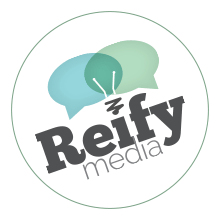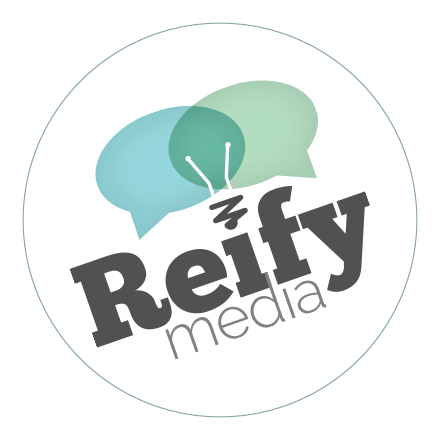Leaning on my grocery cart as I waited in the checkout line, I happened to overhear part of a stranger’s phone conversation.
“I have like two hours of CE that has to be done by tomorrow,” he said. “Awful stuff.”
I stood straight up. I knew I shouldn’t eavesdrop, but—
“It’s just useless,” he continued. “I’m hoping I can have it on in the background while I watch the Sox.”
I couldn’t believe it. There he was—the nemesis of eLearning. Standing just a few feet away from me with 12 items or less, nonchalantly embodying one of my industry’s biggest fears.
The Fear of the “Play in the Background” User
When we talk with clients about our eLearning services—basically how we help organizations get training online—we talk about this very nemesis.
We hear a certain question, one which demonstrates our clients’ fear of imaginary learners who “complete” online training modules without engaging in the material:
“What if the staff just let the training play, but ignore it?” they ask.
They are concerned. “They” could be corporate executives or association directors, compliance officers or university administrators. And “they” are afraid their employees/faculty/contractors/certified professionals/etc. won’t pay as much attention to material if it’s moved online.
We understand why. Online training does give some power to the user. What these companies, universities, and associations are really asking is—if my staff aren’t being trained in person, how do I know they are paying attention? In other words—when training is offered online, what’s to keep someone from just hitting “play” and then, well, watching the Sox?
Whether it’s corporate-developed onboarding or skills training or whether it’s accreditation- or association-required continuing professional education (CPE), we hear this concern.
Engaging eLearning and Learning Motivation
I’ll never know what kind of CE my nemesis was dreading. That being said, I can think of some simple questions that I’d ask him.
- Could this training help you save time by teaching you new skills?
- Could this training help you to address difficult tasks by showcasing best practices?
- Could this training help you save lives, save money, or save face?
- What is interesting or unique about this training?
- What is new or innovative about this training?
- When you complete this training, what will you be able to do? Or do better?
- When you complete this training, what will set you apart from learners who haven’t completed this training?
Certainly, we don’t have the opportunity to interview learners every time they engage in an online training program. But asking these audience-focused questions during the all important research and design phase can help us at that potential pivot point—can help us to mesh learner needs with content requirements.
Then, when you introduce training to learners—when you invite them to the webinar or add them to the online course—you can make sure to tell them these key points. You can tell them what the training will do for them, why they should take it, and what they will get out of it. (Hint: Even if it’s required training, “It’s Required” shouldn’t be the only reason they take it.)
But… What’s the Answer? What if They DO Hit Play then Go Away?
They might. Honestly, they just might.
But what’s new? In-person training sessions have participants who tune out, who check their phones, who day dream, who don’t want to be there—you can’t force learners to want to take your training.
The issue there isn’t, then, whether the learner will hit play and go away. It’s how to correctly orient the learner to the training, so that he or she wouldn’t want to.
Well-designed programs—through knowledge checks or assessment programs or certification requirements or coaching sessions or virtual labs—will figure that out pretty quickly if someone has “hit play and gone away,” and said learner will be directed back to the start—whether the Sox win or not.
Related Resources
Want to continue these conversation? Check out these additional resources or shoot us a note.
- 5 Proven Ways to Engage Employees In Your Virtual Classroom: https://elearningindustry.com/5-proven-ways-engage-employees-in-your-virtual-classroom
- 8 Ways to Drive Employee Engagement in the Virtual Classroom: http://www.knowledgeanywhere.com/resources/article-detail/8-ways-to-drive-employee-engagement-in-the-virtual-classroom
- How to Choose an Online Training Course that will Boost Employee Engagement: https://www.linkedin.com/pulse/how-choose-online-training-course-boost-employee-geseth-garcia
- 3 Ways to Engage Your Staff with Interactive eLearning Courses: https://elearningindustry.com/engaging-staff-interactive-elearning-courses
- 5 Secrets to Increase Employee Engagement with Technology: info.shiftelearning.com/blog/increase-employee-engagement-with-technology
- Year One: 3 Lessons Learned for Creating Engaging eLearning: http://www.dashe.com/blog/elearning/3-lessons-learned-creating-engaging-e-learning/
- Employees Dread Training? Making Employee Training and Development Engaging (for in-person training): https://elearningindustry.com/employees-dread-training-making-employee-training-and-development-engaging
This post was also published on LinkedIn at https://www.linkedin.com/pulse/so-i-ran-nemesis-elearning-yesterday-grocery-store-sarah-glova.




























